#without a tight feedback/revision loop
Explore tagged Tumblr posts
Text
I (as a person not remotely connected to this scenario) would be sorely tempted to not only keep "devoid" but scour the depths of my middle school consciousness to add another complex word. The needs of society require us to work to calibrate our tools (or at least our processes) to the reality of human diversity, rather than flattening human expression to match the tool.

#I support the kid#but we also need to fix the not-first-language bias#ai#llm#shouldn't be using these prototypes in ways that affect lives without a li#without a tight feedback/revision loop#none of this was ready for production
52K notes
·
View notes
Text
What Clients Expect from Proofreading Services Today
The world of proofreading has evolved dramatically. In today’s content-saturated digital economy, clients no longer look at proofreading as a basic grammar check. Instead, they expect an elevated service that brings strategic value, improves readability, supports SEO, and maintains brand voice. This is why Proofreading and Editing Services have become an essential part of any high-quality publishing or marketing workflow.
From startups and academic institutions to eCommerce businesses and global enterprises, clients demand more than clean copy—they expect insight, speed, and professionalism. At Proofreading and Editing Services, we understand that expectations have changed. Here's what modern clients really want when they seek expert editing support.
1. Flawless Grammar and Spelling Is Just the Start
Yes, accuracy matters—but it’s a given. Clients expect:
Correct grammar, spelling, and punctuation
Consistent use of UK/US English
Proper citation formatting (APA, MLA, Chicago)
Correction of tense, subject-verb agreement, and sentence fragments
This foundational work is expected, not exceptional. What distinguishes great proofreading services today is what comes next.
2. Contextual Editing for Purpose and Audience
Clients expect their content to be not just correct but effective. Proofreaders are now required to:
Edit according to the content’s purpose (inform, persuade, instruct)
Adapt tone based on audience (formal for legal, friendly for lifestyle blogs)
Maintain or refine brand voice consistently across different content types
A good proofreader ensures that a blog post sounds human, a policy brief sounds credible, and a sales page sells—without sacrificing grammar.
3. SEO and Formatting Awareness
Digital clients want content that ranks, not just reads well. That means editors need to:
Maintain proper header structures (H1, H2, H3)
Insert keywords naturally without compromising flow
Edit meta titles, alt texts, and internal links
Avoid overuse of passive voice and wordiness
Proofreaders who understand SEO add direct value to digital content performance.
4. Fast Turnaround with High Accuracy
With tight publishing schedules and agile workflows, clients expect:
24–48 hour turnaround on short pieces
Flexible capacity for high-volume batches
Zero compromise on accuracy despite short timelines
Communication throughout the process
Editors who meet tight deadlines without missing details become long-term partners, not one-time vendors.
5. Adaptability Across Content Types
Today’s clients produce varied content—from whitepapers and scripts to social media captions and infographics. They expect proofreaders to:
Handle long-form and short-form content
Understand editing for blogs, video scripts, academic papers, and product descriptions
Use relevant tools like MS Word track changes, Google Docs comments, or PDF annotations
Be comfortable working within CMS or publishing platforms
In short, one-size-fits-all editing no longer works. Clients want specialists who can pivot as needed.
6. Clarity in Communication and Process
Clients want a clear editorial process with:
Defined editing stages (proofreading vs line editing vs copyediting)
Transparent pricing models
Clear feedback loops and revision policies
A professional, collaborative tone throughout
They appreciate editors who ask clarifying questions and offer suggestions, rather than just silently correcting.
7. Confidentiality and Professionalism
Especially in sectors like legal, medical, or academic writing, clients demand strict confidentiality. A reliable proofreading service is expected to:
Sign NDAs when required
Use secure file transfer systems
Respect intellectual property and privacy rights
Professionalism in tone, delivery, and data handling is a key trust factor.
8. Value Beyond Edits
Top-tier proofreading services offer more than corrections. Clients also look for:
Suggestions to enhance clarity or engagement
Feedback on structure, logic, or formatting
Resources or style guides for internal teams
Optional add-ons like plagiarism checks or citation validation
This consultative approach transforms proofreading into a high-value editorial partnership.
Final Thoughts
The role of proofreaders has expanded from grammar guardians to content collaborators. Today’s clients expect thoughtful editing that enhances clarity, supports their goals, and reflects their unique voice. They don’t just want clean text—they want content that works harder, performs better, and communicates more effectively.
If you're ready to meet those expectations, our Proofreading and Editing Services are designed for modern content needs. Whether you're building a brand, submitting a thesis, or preparing a global marketing campaign, we bring precision, insight, and care to every word.
0 notes
Photo
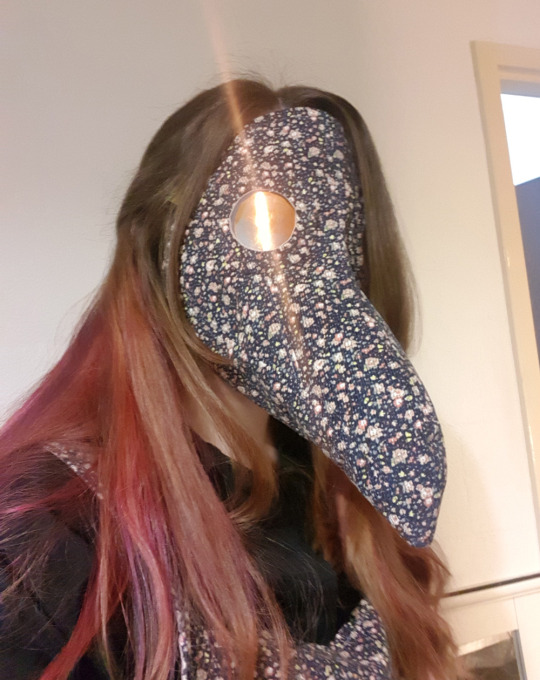
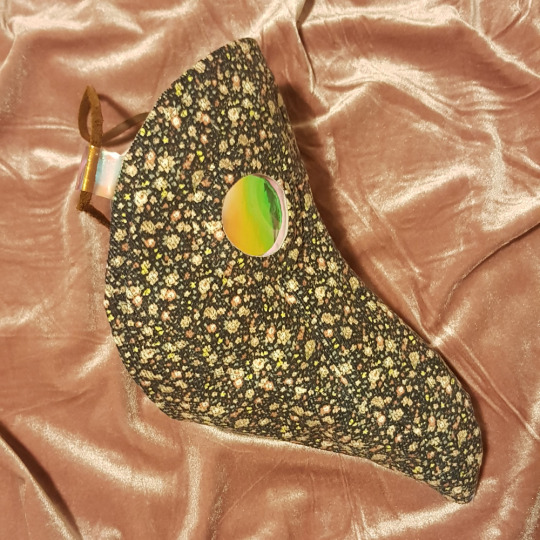
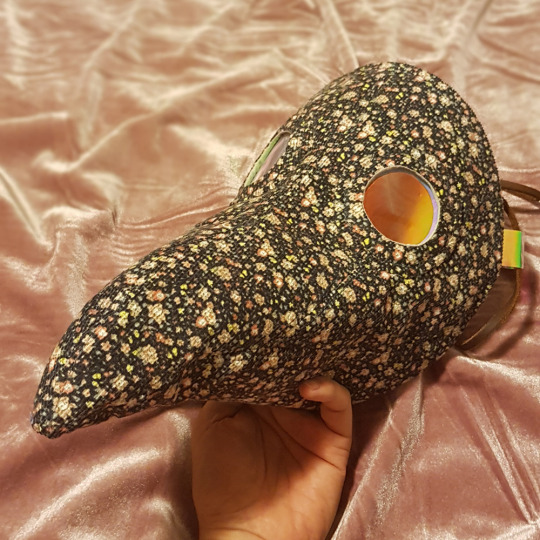
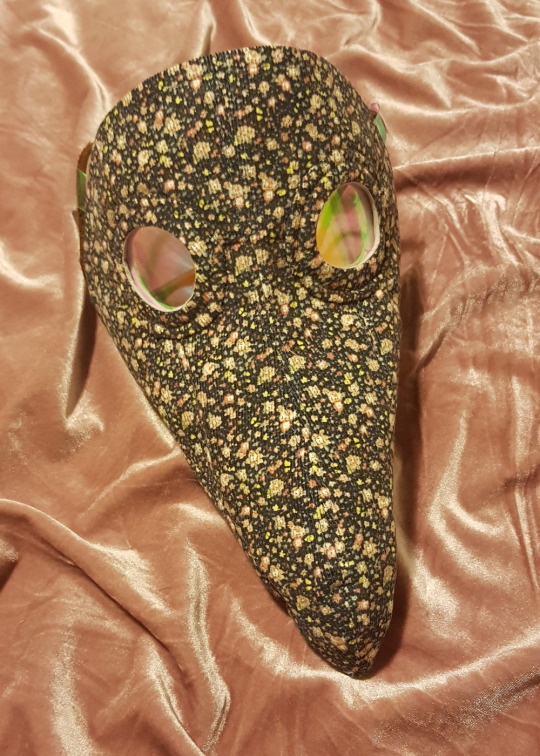
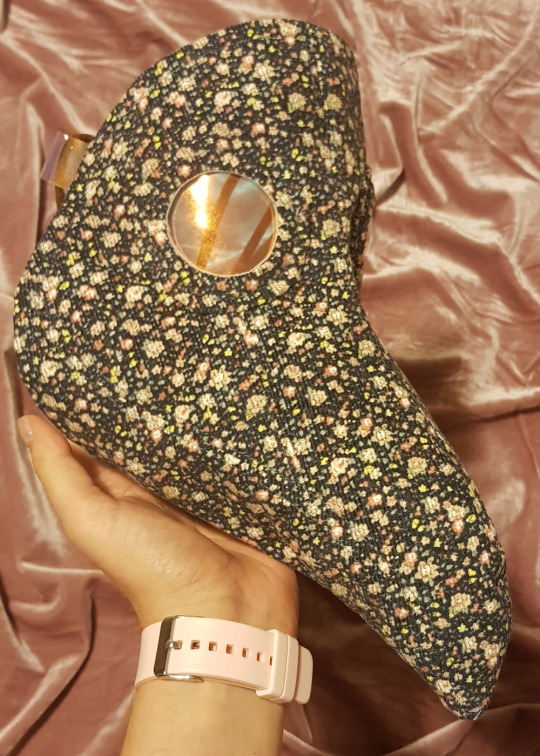
Okay this is the last one I mean it. Floral print pinwale corduroy, one layer of midweight fusible non-woven interfacing. Loops instead of straps, because I thought maybe I could bobby-pin in in place, but I ended up putting cord through the loops. The first one that is not unbearably hot to wear. Matches my pinafore, because if you can make a fashion statement like that, you are an idiot not to.
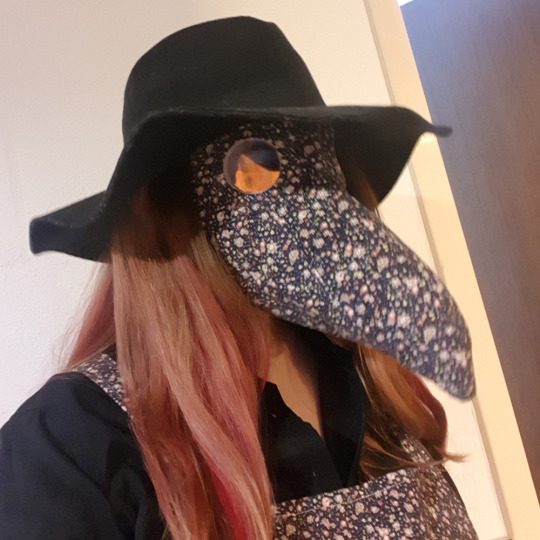
I made this one to address something I have seen a fair few times in the comments and the tags of the post with the original pattern, which is people being sad that they don’t think they have the skills to make the quilted plague mask. Because you probably could! Even without a machine, a lot of us suddenly have a lot of free time and you don’t need much in the way of materials, just patience and a willingness to carefully stab.
But there are two reasons I put that disclaimer in there.
The first is that I have never written a pattern like this before, but I have made things like this a lot. That means that I am making a lot of assumptions about what needs to be explained, and there are all sorts of rules and steps that are obvious or intuitive to me that I probably missed out. I glossed over some things like making sure the fabrics and the pieces are facing the right way, or the right type of stitches to use for certain bits. These are little absences that might screw up a beginner in a big way, and I didn’t want anyone to be upset or feel stupid when they couldn’t get it to work when the error was in my explanation. If I was an actual pattern writer I would have had people of different skill levels test the instructions out and let me know what I missed; instead I typed it and pressed the post button without even a spell check.
The second reason is that this pattern is unashamedly unnecessarily complicated. No one needs to use 44 bits of fabric to make a mask. It is dumb and fun and absurd. The difficulty is the point.
But there is a middle ground too, and I want to thank everyone who commented or tagged their intention to sew a plague doctor mask out of denim for motivating me to do this. You are the only ones who really 100% got the spirit of this dumb idea, and I look forward to seeing your Jlague Joctor Jasks roaming the wasteland.
To that end, here is a revised version for a single fabric.
It is comprised of two body pieces that you cut two of each, and has easier to match curves and a lot of little marks to hopefully make it easier still. It is US letter sized, but unless you have borderless printing, a small amount will probably be cut off. Alternatively, this A4 sized one will print on A4 (obviously) and US legal paper without losing any at the edges. This version has much thicker lines because it doesn’t need the accuracy of the original, and it has a scale so that anyone without access to a printer can trace it straight from their computer screens. Please be aware too that these patterns do not have seam allowances - you will need to add them to your fabric.

Apart from the rounding off, it is almost an identical shape to the original, except the curve at the neck is deeper after I got some feedback that maybe it was a bit tight.
I have not re-written the instructions, but the method is the same as the original, just skipping all the bits where you piece together a pile of slightly different triangles. I also did not include the circles, but if you are doing it the complicated way from the other pattern, the inner that aligns with the eyehole edges is 1¾ inches in diameter, the middle is 3 inches and the big one is 4¼ inches. But if your fabric is heavy enough, I would probably recommend just putting some fray-stop on the edges of a neatly cut single layer of fabric.
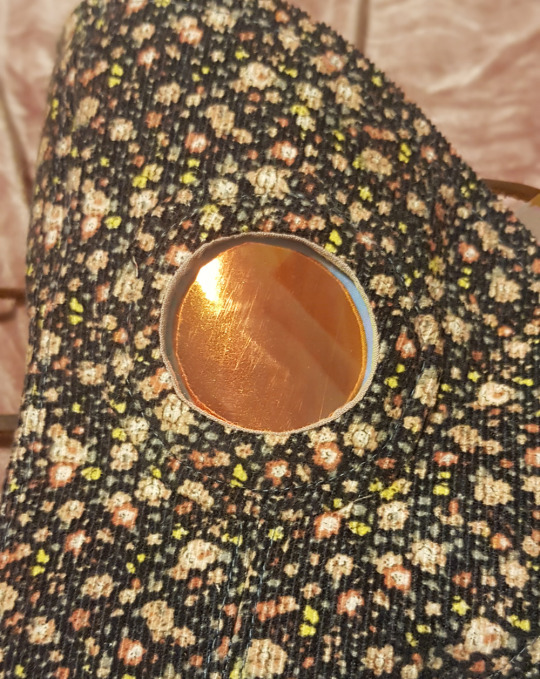
And for anyone struggling to find suitable lenses, I have started using some holographic vinyl (similar stuff on amazon), which is easy to cut to size and both transparent enough to see through and reflective enough to hide your eyes at least somewhat. It also didn’t fog up like the glasses did.
#plague doctor mask#sewing pattern#quarantine craft#mask sewing#long post#sewing#dressmaking#I suppose technically since it is no longer quilted#I am most excited for the ones that people do in weird fabric#that's who this pattern is for#versions in stonewash denim and mustard green velour and old vintage tablecloths#That last one might be me I might have lied about this being the last one I make
1K notes
·
View notes
Text
5 Tips to Choose the Mobile App Development Services
A unique mobile application development idea can literally change the world. Apps like Facebook,Instagram,Twitter are very popular today, not because of the fact that they were started by famous business people. It is the innovative approach of these mobile apps that have taken the tech world by storm.
With a growing number of tech-savvy users worldwide, mobile application development created disruptions across all major industries to offer business-friendliness, greater ease of use, and access to data to employees and customers alike Huh. As the need for mobile application development continues to grow, a lot of mobile app development companies have come forward to provide the right and specific app solutions to their customers.
These companies can help you get started with the mobile application development process, especially if you have a creative app development idea in mind. But, what if you don't have an idea and still need a mobile app for your business? Or, you have the right concept of how you want your business app,local app but want it to be within a very tight budget? Here a careful selection plays a role.
Simply put, you need to choose a company that understands your business needs and can provide innovative solutions according to your specifications and guidelines. Searching Google for a mobile app development company is not just that; There are thousands of companies that offer just that, and this creates a lot of confusion. You have to analyze and sort the revised requirements on search engines to get the right results.
Wondering how to go about it? Here are some tips from the application development team that will help you choose the best mobile app development company for your business.
5 effective tips for choosing a mobile app development company
If you have a medium to large scale business, a mobile app can be a very important part of your business growth strategy. Therefore, you have to choose a mobile app development services company that has an innovative approach along with futuristic thinking. But before you judge the strengths and weaknesses of any company, you need to start by assessing your organizational needs and checking whether the chosen company can meet them. Here are 5 proven tips to find the mobile app company of your choice:
1. Know what your app requirements are
This may sound like a no-brainier, but having a thorough understanding of your app development requirements can definitely help you filter out mobile app development companies. The process should begin with a close analysis of the specific business demands and objectives that you need to transform into meaningful application features and functionalities. We've noticed that many of our customers struggle with determining this with their business apps.
What kind of products / services are you trying to sell? Where do you want your app: on Android, iOS, Windows-based mobile application development platforms? Who will build your user base? What kind of mobile app do you want- native, hybrid ,android ,iOS or web-based app ? Once you are confident about what you want from the app, you are ready to move on to the next step. 2. Inquire about their app delivery time-to-market
Faster demand Time-to-market is the new demand in today's digital age of digital disruption. If your chosen mobile app development company is slow to market apps, there is an increased chance that you will fall behind your competition.Therefore, focus on choosing mobile app development companies, which deliver high quality apps quickly,using user interface And mobile friendly etc keeping in mind the changing trends in the market for app development.
3. Take a closer look at their portfolio
Once you open the website of any mobile app development services, start checking their portfolio. Portfolios provide a good overview of the business domain and project topics that the company is involved in, and the kind of technical expertise they have. You can also liaise with the company to understand if they have worked on the kind of app you want to give first or have the ability to deliver.
4. Check how cheap they are
If you choosing the right mobile app development company, you will always find the development cost and app quality to be in conflict. Many organizations opt for start-ups to keep development costs down and get finished products that have little market relevance. On the other hand, it is wrong to assume that the best mobile app development companies offering quality app solutions will always be high priced. Here you need to keep in mind that only strong market players can provide quality apps at an efficient cost. If you are looking for a good market visibility plan
5. See how transparent their process is
The product development cycle policy followed by the mobile app development services also play a very most important role in the selection process. The following code methods of mobile application development have gained immense popularity for rapid app delivery, but some major mobile app development companies in the US follow it nowadays. In addition, seek out companies providing transparent communication and feedback loops in the development process to have a better mutual understanding, and respond to errors and recurrence requests quickly.
We understand the value of our clients' businesses and the customers they serve and empower them to build fast, flexible and futuristic apps that help them stay on top and out in the game. We believe in building transparent partnerships instead of just building relationships so that you can get started in the digital transformation journey of your business without any hurdles / unexpected surprises along the way.
0 notes
Text
Interview: Pete List
In addition to being a good friend Pete is an animator, multi-instrumentalist, and beatboxer. Over the years we've collaborated on a number of musical projects, such as our band Djinn, and I'm always amazed by his abilities as a technician and an artist with a distinct vision. He's ambitious, a perfectionist, and he lays down some phat beats. After all these years it's interesting to get some insight into his creative process.
How would you describe you what is it that you do?
I’m a multimedia character animator and composer. I create hand drawn animation, stop motion, photo animation, clay, but always animating characters. I play a number of different instruments, but I think of myself more as a composer than a musician.
Have you always done this for a living or did you transition from something else? What triggered your decision to make a change?
I’ve always been interested in animation. I love the work. On one hand, the logic of the math, physics, and timing of motion to create movement with weight and realism, and on the other the magic of giving life and expression and emotion to an inanimate objects.
Music has always been a natural expression for me. I think my interest again is the contrast of the logic and math of rhythm and notes with the intangible emotional expression of music.
What is the most challenging thing about practicing your craft? How do you deal with that challenge?
With animation, I work a lot by myself. Sometimes this can make me a bit crazy. I’ve often rented a work space just to have a social outlet during my work day. Also, I find my music life provides a social balance to my often isolated animation work.
Do you still practice? If so, what do your practice sessions look like?
These days, usually my practice is my work. With music, the only time I really practice is when I have a deadline. When I have a show, I finish songs and practice intently. Otherwise I noodle.
With animation, I never practice. Every job is a bit different, and most of the work has limited time to complete. You have to get it right the first time. There is no time for practice. I've done enough animation, that I just trust my instinct and do it.
Where do you find inspiration?
Most of my music ideas come from other music. When I hear music I like, I usually copy some part of the idea of that music, whether is is the rhythm or part of the melody or something of the sensibility. As the idea develops, it usually changes enough that the original influence is not obvious to anyone but me.
I've been hired on occasion to replace music. In this case someone has created video of a choreography, or a piece of animation to some music which they cannot get permission to use or cannot afford the rights to. I have to match the tempo and feel and certain moments of the existing composition. It's an interesting way to create. The first time I did a project like this, I thought the music would come out as an identifiable copy of the original, but the final piece was significantly different. It was an amazing experience. I found that when working within a strict structure, sometimes creativity comes easier. And it forced me to create music I never would have made otherwise.
Where are you when you have the most a-ha moments?
After the fact. Most of these moments occur for me when I'm reflecting on finished animation after I've had an extremely tight deadline or had to work under pressure. At those times I have a tendency to think less and make decisions instinctively. That's when I tend to do some of my best work. Sometimes I don't even remember the best parts of this kind of work until I see the final edit.
What do you do to maintain a creative flow?
Stop thinking. I try to do planning and thinking at the beginning and then stop thinking.
How much do you rely on feedback from other to help shape your ideas?
Feedback is always helpful for me. It gives me ideas. I don't necessarily follow feedback directly, but I usually try to use feedback as a way to identify what is not working. In my experience, a client will always know what they don't like, but they can't always identify why or vocalize what they do want. When a client asks for specific revisions I find I need to try to understand the issues behind the suggested revisions.
What is the greatest obstacle to creativity?
Focus and time. I had a friend in college who had some brilliant ideas for visual art and could talk about them for hours, but he could never seem to sit down and make them. We used to joke that he was the ultimate conceptual artist because his art was never more than an idea. I seem to have an unlimited number of ideas with images, music, animation. My greatest weakness is focus and followthrough. Making time is always a challenge. I've been trying recently to schedule time to be creative. This may seem like a bit of an oxymoron, but there is always an element of work to being creative, and scheduling time to be creative is an idea I'm trying to implement in my life.
When you complete a project, how often does it resemble your initial concept or conceived idea? How important is this for you?
Not often. I've gotten to a point with my animation where I try not to conceptualize too much. I tend to work front to back and see what happens. I also have a tendency to do finish work first. Not always a great idea, but I'm lucky enough to have a bit of creative breathing room most of the time. I've been making films from children's books for the last 7 or 8 years. With these projects there is a map to go from (the original book), so I just start to work front to back. I don't usually conceptualize and rough out. I just go. I trust that it will hold together in the end and many times it comes out better than I expect.
I think this also stems from doing stop motion commercial work. Many times on these jobs, I plan what I'm doing to develop an idea of what I'd like to see, and I then start to animate and stop to think. With commercials, you must work fast and do it right the first time. You have to trust your instinct. Often with this kind of work, there is a hitch. The animation models don't move quite the way you want, or the framing doesn't allow for certain action, so I try not to have a concrete idea of what I'm striving for... more of a gesture.
How do you know when you’re done?
Usually when I'm out of time. If I have a deadline, I'm usually done when I think it's "good enough". I'm a bit of a perfectionist, so good enough is usually better than it needs to be.
If I have no deadline, it's done when changes don't seem to improve anything. There is a point when more work makes the result less.
I learned a great lesson when I was directing a job once. We got to a point with the work when the client was happy. I was not. I wanted to make a few more changes, but the producer protested. He said, "The client is happy. The job is done." Sometimes it's that simple.
How do you resolve creative differences with clients or creative partners?
Usually I am in charge or I am a hired hand, so my role is pretty clear. I also try to keep perspective on what the intent of the work is. For commercial work, in the end, the client is always right. Even when they are wrong.
What keeps you motivated even if you don’t connect personally with the project?
I usually find something I enjoy in all my work. I enjoy process, especially with animation. I love animating. When a project doesn't appeal to me, usually the actual act of animating is enough for me. Luckily, I've had a lot of varied and interesting jobs. Being a freelancer, many jobs are short and most are very different from each other. And usually there is enough of a challenge or at least an element that I enjoy, that I'm never really without motivation. Occasionally a job holds very little interest, and then a paycheck has to be enough motivation.
What do you do when you are stuck and have some sort of deadline or other pressure?
• Switch it up for a moment. Play some guitar. Play a video game.
• Ask a friend. Sometimes a fresh perspective helps.
• Or just work on a different aspect of the project.
• Or just work through it. I find a lot of solutions result from making a draft. For me many times the draft is close to, or actually, the final.
How do you achieve your creative vision with a limited budget?
Simplicity. Most of the time simpler is better. When you have a limited budget, simplicity is usually necessary. I also know that I tend not to work simply, so I've also learned to say no to low budget work unless there is a personal stake of some kind in it. Saying no is hard, but sometimes it's for the better.
What are the top 3 tools in your creative tool kit? ie. software, pencil, paper, journal etc.
For song writing, a guitar, my looping pedal setup and a room to myself. For animation, Flash, After Effects, instinct.
What are the top 3 creative habits that have proven to be the most useful for you in your career?
1. Be willing to throw away your work. Everything always changes. Being precious about work or ideas stops you from moving forward.
2. Work through it. When I'm stuck, sometimes I just have to keep doing, and the problem works itself out.
2 ½. When working through it doesn't help, leave it until tomorrow.
3. Keep a regular schedule. I find that I wake up every day around the same time. I start and end work around the same time. As a freelancer, this is really important for my productivity. When possible, I try not to work more than 8 hours a day. In my experience, sometimes the work of two 8 hour days is equal to the work of two 12 hour days because after a certain amount of time, I'm just not effectively productive.
If you could offer a single piece of advice to a budding professional, what would it be?
Be flexible. Enjoy the process, and don't be too precious with your ideas. Be open to the idea that your work and your life will likely go in a different direction than you expect.
Visit Pete's website for more info
0 notes
Text
Interview: Pete List
In addition to being a good friend Pete is an animator, multi-instrumentalist, and beatboxer. Over the years we've collaborated on a number of musical projects, such as our band Djinn, and I'm always amazed by his abilities as a technician and an artist with a distinct vision. He's ambitious, a perfectionist, and he lays down some phat beats. After all these years it's interesting to get some insight into his creative process.
How would you describe you what is it that you do?
I’m a multimedia character animator and composer. I create hand drawn animation, stop motion, photo animation, clay, but always animating characters. I play a number of different instruments, but I think of myself more as a composer than a musician.
Have you always done this for a living or did you transition from something else? What triggered your decision to make a change?
I’ve always been interested in animation. I love the work. On one hand, the logic of the math, physics, and timing of motion to create movement with weight and realism, and on the other the magic of giving life and expression and emotion to an inanimate objects.
Music has always been a natural expression for me. I think my interest again is the contrast of the logic and math of rhythm and notes with the intangible emotional expression of music.
What is the most challenging thing about practicing your craft? How do you deal with that challenge?
With animation, I work a lot by myself. Sometimes this can make me a bit crazy. I’ve often rented a work space just to have a social outlet during my work day. Also, I find my music life provides a social balance to my often isolated animation work.
Do you still practice? If so, what do your practice sessions look like?
These days, usually my practice is my work. With music, the only time I really practice is when I have a deadline. When I have a show, I finish songs and practice intently. Otherwise I noodle.
With animation, I never practice. Every job is a bit different, and most of the work has limited time to complete. You have to get it right the first time. There is no time for practice. I've done enough animation, that I just trust my instinct and do it.
Where do you find inspiration?
Most of my music ideas come from other music. When I hear music I like, I usually copy some part of the idea of that music, whether is is the rhythm or part of the melody or something of the sensibility. As the idea develops, it usually changes enough that the original influence is not obvious to anyone but me.
I've been hired on occasion to replace music. In this case someone has created video of a choreography, or a piece of animation to some music which they cannot get permission to use or cannot afford the rights to. I have to match the tempo and feel and certain moments of the existing composition. It's an interesting way to create. The first time I did a project like this, I thought the music would come out as an identifiable copy of the original, but the final piece was significantly different. It was an amazing experience. I found that when working within a strict structure, sometimes creativity comes easier. And it forced me to create music I never would have made otherwise.
Where are you when you have the most a-ha moments?
After the fact. Most of these moments occur for me when I'm reflecting on finished animation after I've had an extremely tight deadline or had to work under pressure. At those times I have a tendency to think less and make decisions instinctively. That's when I tend to do some of my best work. Sometimes I don't even remember the best parts of this kind of work until I see the final edit.
What do you do to maintain a creative flow?
Stop thinking. I try to do planning and thinking at the beginning and then stop thinking.
How much do you rely on feedback from other to help shape your ideas?
Feedback is always helpful for me. It gives me ideas. I don't necessarily follow feedback directly, but I usually try to use feedback as a way to identify what is not working. In my experience, a client will always know what they don't like, but they can't always identify why or vocalize what they do want. When a client asks for specific revisions I find I need to try to understand the issues behind the suggested revisions.
What is the greatest obstacle to creativity?
Focus and time. I had a friend in college who had some brilliant ideas for visual art and could talk about them for hours, but he could never seem to sit down and make them. We used to joke that he was the ultimate conceptual artist because his art was never more than an idea. I seem to have an unlimited number of ideas with images, music, animation. My greatest weakness is focus and followthrough. Making time is always a challenge. I've been trying recently to schedule time to be creative. This may seem like a bit of an oxymoron, but there is always an element of work to being creative, and scheduling time to be creative is an idea I'm trying to implement in my life.
When you complete a project, how often does it resemble your initial concept or conceived idea? How important is this for you?
Not often. I've gotten to a point with my animation where I try not to conceptualize too much. I tend to work front to back and see what happens. I also have a tendency to do finish work first. Not always a great idea, but I'm lucky enough to have a bit of creative breathing room most of the time. I've been making films from children's books for the last 7 or 8 years. With these projects there is a map to go from (the original book), so I just start to work front to back. I don't usually conceptualize and rough out. I just go. I trust that it will hold together in the end and many times it comes out better than I expect.
I think this also stems from doing stop motion commercial work. Many times on these jobs, I plan what I'm doing to develop an idea of what I'd like to see, and I then start to animate and stop to think. With commercials, you must work fast and do it right the first time. You have to trust your instinct. Often with this kind of work, there is a hitch. The animation models don't move quite the way you want, or the framing doesn't allow for certain action, so I try not to have a concrete idea of what I'm striving for... more of a gesture.
How do you know when you’re done?
Usually when I'm out of time. If I have a deadline, I'm usually done when I think it's "good enough". I'm a bit of a perfectionist, so good enough is usually better than it needs to be.
If I have no deadline, it's done when changes don't seem to improve anything. There is a point when more work makes the result less.
I learned a great lesson when I was directing a job once. We got to a point with the work when the client was happy. I was not. I wanted to make a few more changes, but the producer protested. He said, "The client is happy. The job is done." Sometimes it's that simple.
How do you resolve creative differences with clients or creative partners?
Usually I am in charge or I am a hired hand, so my role is pretty clear. I also try to keep perspective on what the intent of the work is. For commercial work, in the end, the client is always right. Even when they are wrong.
What keeps you motivated even if you don’t connect personally with the project?
I usually find something I enjoy in all my work. I enjoy process, especially with animation. I love animating. When a project doesn't appeal to me, usually the actual act of animating is enough for me. Luckily, I've had a lot of varied and interesting jobs. Being a freelancer, many jobs are short and most are very different from each other. And usually there is enough of a challenge or at least an element that I enjoy, that I'm never really without motivation. Occasionally a job holds very little interest, and then a paycheck has to be enough motivation.
What do you do when you are stuck and have some sort of deadline or other pressure?
• Switch it up for a moment. Play some guitar. Play a video game.
• Ask a friend. Sometimes a fresh perspective helps.
• Or just work on a different aspect of the project.
• Or just work through it. I find a lot of solutions result from making a draft. For me many times the draft is close to, or actually, the final.
How do you achieve your creative vision with a limited budget?
Simplicity. Most of the time simpler is better. When you have a limited budget, simplicity is usually necessary. I also know that I tend not to work simply, so I've also learned to say no to low budget work unless there is a personal stake of some kind in it. Saying no is hard, but sometimes it's for the better.
What are the top 3 tools in your creative tool kit? ie. software, pencil, paper, journal etc.
For song writing, a guitar, my looping pedal setup and a room to myself. For animation, Flash, After Effects, instinct.
What are the top 3 creative habits that have proven to be the most useful for you in your career?
1. Be willing to throw away your work. Everything always changes. Being precious about work or ideas stops you from moving forward.
2. Work through it. When I'm stuck, sometimes I just have to keep doing, and the problem works itself out.
2 ½. When working through it doesn't help, leave it until tomorrow.
3. Keep a regular schedule. I find that I wake up every day around the same time. I start and end work around the same time. As a freelancer, this is really important for my productivity. When possible, I try not to work more than 8 hours a day. In my experience, sometimes the work of two 8 hour days is equal to the work of two 12 hour days because after a certain amount of time, I'm just not effectively productive.
If you could offer a single piece of advice to a budding professional, what would it be?
Be flexible. Enjoy the process, and don't be too precious with your ideas. Be open to the idea that your work and your life will likely go in a different direction than you expect.
Visit Pete's website for more info
0 notes
Text
What Happens When Clients Ignore Agency Recommendations (and How to Fix It)
Hiring a digital marketing agency means bringing on a team of strategists, creatives, and analysts who are deeply invested in helping your business grow. But the relationship only works when there’s trust—particularly when it comes to executing on expert recommendations.
Unfortunately, when clients regularly ignore or delay agency guidance, the consequences go beyond misalignment—they can result in poor performance, wasted budgets, and a breakdown in communication. Here's what happens when agency advice is overlooked—and more importantly, how to fix it without friction.
📉 1. Campaign Performance Suffers
When key recommendations—like updating landing pages, adjusting budgets, or refining targeting—are ignored, campaign performance takes a direct hit.
Why it matters:
Conversion rates may stagnate or drop
Ad spend becomes inefficient (high CPC, low ROAS)
Your competitors outpace you with faster optimisation cycles
Fix it: Review the “why” behind each suggestion. Most recommendations aren’t based on guesswork—they’re data-backed. Ask your agency to show you the performance impact or forecast tied to the suggestion.
🔁 2. A Cycle of Revisions and Delays Starts
When clients override or delay approvals (e.g., not signing off creatives, stalling technical changes), timelines stretch. This often leads to:
Missed campaign launch windows
Reactive work instead of proactive strategy
Reduced testing opportunities
Fix it: Assign a clear internal decision-maker and streamline feedback loops. If bandwidth is tight, ask your agency to recommend a leaner review process so momentum doesn't stall.
🤝 3. The Agency-Client Trust Dynamic Breaks Down
When expert advice is consistently dismissed, your agency may:
Shift into “order-taker” mode rather than strategic partner
Reduce initiative in sharing bold ideas
Feel less invested in performance (and you’ll feel it, too)
Fix it: Have an honest conversation. If you’re uncomfortable with a recommendation, say why—is it budget? Brand concerns? Timing? Great agencies will adjust, but only if they know the real roadblock.
💸 4. You Pay for Strategy—But Don’t Use It
You’re not just paying for ad management—you’re paying for insights, experience, and direction. When recommendations are ignored, your investment loses value. The agency may hit its deliverables, but not your potential.
Fix it: Revisit your scope and deliverables. If you're not leveraging strategy sessions or audits, build time into your schedule to digest them. Ask for summary takeaways or a 15-minute debrief call if you're short on time.
🔍 5. Results Are Blamed on the Wrong Causes
When performance dips and strategy is underutilised, frustration builds on both sides. The agency might be held accountable for underperformance—even though the root issue was inaction or partial execution.
Fix it: Use a shared scorecard or roadmap. This tracks what was recommended, what was implemented, and the impact of each. It’s a non-confrontational way to keep both sides accountable and focused on solutions.
✅ How to Get Back on Track
If you’re working with an agency and feeling disconnected or unsure about next steps, here’s how to reset:
Revisit the Goals Together: Are you aligned on what success looks like—lead volume, CAC, ROAS, brand visibility? Misalignment here is often the root of ignored recommendations.
Request Simplified Recommendations: If the strategy feels too complex, ask the agency to provide a priority-ranked list of actions with quick wins and long-term moves.
Create a Feedback Cadence: Set a fixed day each week or month for reviewing ideas, deliverables, and approvals. Structure prevents silence.
Be Honest About Limits: Budget constraints? Internal politics? Time crunch? A good agency can adapt if they understand the boundaries.
Ask for Success Stories or Proof: If you're unsure about a recommendation, request case studies, data, or competitor benchmarks to build confidence.
Final Thoughts
A digital marketing agency can do incredible things—but only when their recommendations are put into action. The best results come from mutual respect, open dialogue, and shared ownership of outcomes.
So if you’ve hired experts, let them guide the ship. When clients and agencies move in sync, the results aren’t just better—they’re transformational.
0 notes